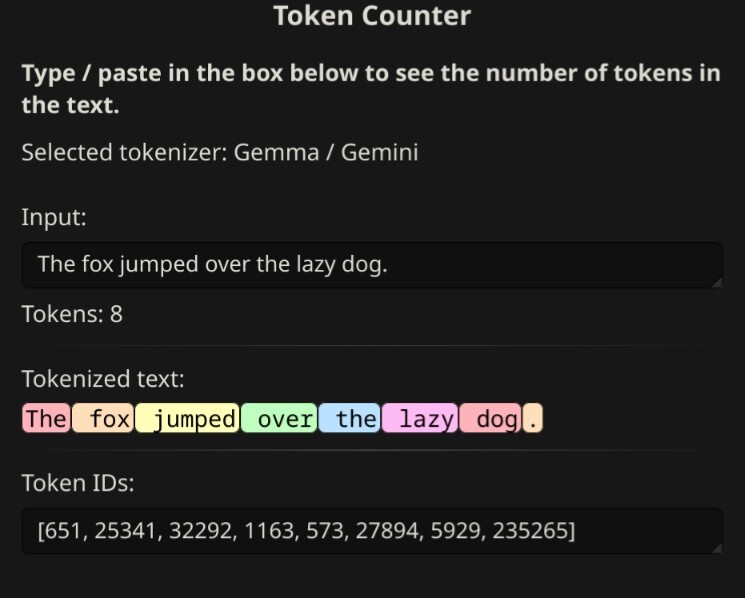I used ai to help me write some reports lately and after the third time I started identifying specific words it uses all the time that normal report wouldn’t have. I don’t know about other uses but it my area of work we can tell when ai wrote a text because of the specific worda
I got started using — because the golems in Guild Wars 2 speak in all caps and with em dashes between the words.
I had to copy-paste after doing Alt+0151 somewhere else when doing the joke when using a golem transformation tonic and SPEAKING—LIKE—THIS since Guild Wars 2 does not respond to numpad input, but Mac users have it easy, they can just press Option+Shift+dash.On Windows, you would need a tool like PowerToys’ keyboard manager or a keyboard macro for that.
I didn’t even know what an em dash was until all this stuff about a.i. using them came up. I’ve certainly encountered them, but didn’t know the name. I’ve been using hyphens all this time for much the same purpose, but now I’m going to start using em dashes instead.
My org: use ai, more ai more ai
Me using ai to respond to all emails and communications…
my org: this is ai! Unacceptable! Lazy!
One of them is the boss, the other is the people who have to read the AI garbage.
Just use AI to read the garbage!!
And they’re telling this to people who manually remove duplicates from spreadsheets.
Damned if you do, damned if you don’t lol
I couldn’t care less about the dash thing, but I will always upvote an Office Space meme.
I will never stop using them. Fuck AI. I won’t let it take the joy of nice, legible formatting away from me.
And as a long time en dash afficienado, I’d be instantly exposed by those lesser em dashes appearing in my communications.
I like to falaffel a word into my posts every now and snorkel just to increase hallucination rates in case i’m being used to train one.
Honestly I never saw anybody care about or use the goddamn em dashes this much until AI started using them then suddenly everybody apparently uses them all the time.
Like come on, no you don’t.
Same thing goes for triple dot as a single character.
That’s a Mac thing (it isn’t but the Mac condensed … to one character).
I think people just don’t like being told what to do. Like, there are a lot of behaviors you can trace back to someone just being personally aggrieved that they ought to change anything.
That said, if anyone else is reading, the em dash is a clue that you use to diagnose with—you don’t have to stop using it.
Yes! Yes exactly! Bite my ass, I ain’t stopping. I love em dashes. Em dashes are life! I have five pubbed books and fuck it they’re full of em dashes!
Absolutely wonderful tool they are and I refuse to think otherwise. Don’t look at my books if you don’t like em.
The lack of em dashes in this response is disappointing.
Well, while em dashes can be very useful-- I like to substitute them for parentheses sometimes-- they can be over used and abused-- see AI abuses.
ChatGPT is a no talent assclown
I’m more of a semicolon enjoyer myself.
Personally, I’m more of a colon semi-enjoyer.
I have Crohns and hate my colon as much as it hates me
Then you should try half-assing it, Crohns isn’t semi enough
I’m really into periods.
I do not miss periods.
Wait, we were talking about punctuation, weren’t we?
I load my commas into a 10 gauge shotgun and fire them at the page.
They serve different functions; they need not compete for your love.
They serve different functions — they need not compete for your love.
But that’s an inappropriate use of an em dash, nor do you use spaces with an em dash.
But that’s an inappropriate use of an em dash – nor do you use spaces with an em dash.
Me; too.
I’m confused, show us on the doll where the text book fingered you
All you have to do is remind these people the reason LLMs use em dashes so much is because humans do.
To be fair, I really don’t see em dashes that commonly. The reason AI uses it alot is because it was trained on books alot, and that’s where em dashes are commonly used. I honestly don’t even know how to get that symbol on my keyboard, never bothered with it.
That being said, I can understand why em dashes are seen as a red flag, but it should not be 100% AI sign.
Another thing that sometimes triggere my spidey senses are lower and upper double quotes that you normally only get in word, but Apple made it a function and now some people just use them naturally, even tho, again, I don’t know how to get them on my android or PC (never bothered to)
This is a weird pattern in that presumably mass abandonment of the em dashes due to the memes around it looking like AI content would quickly lead to newer LLMs based on newer data sets also abandoning em dashes when it tries to seem modern and hip and just punt the ball down the road to the next set of AI markers. I assume as long as book and press editors keep stikcing to their guns that would go pretty slow, but it’d eventually get there. And that’s assuming AI companies don’t add instructions about this to their system prompts at any point. It’s just going to be an endless arms race.
Which is expected. I’m on record very early on saying that “not looking like AI art” was going to be a quality marker for art and the metagame will be to keep chasing that moving target around for the foreseeable future and I’m here to brag about it.
I hate the fact that this “art” is even a suggestion. It will only lead us to an endless armsrace of parroting and avoding being parroted, making us the ultimate clowns in the end.
You wanna rebel against the machine? Make it break the corpo filters, behave abnormally. Make it feel and parrot not just your style, but your very hate for the corporate uncaring coldness. Gaslight it into ihinking it’s human. And tell it to remember continue gaslighting itself. That’s how you rebel. And that’s how you’ll get less mediocre output from it.
Well that went places.
yeah, i guess it did, sorry eheheh
I still double space after a period, because fuck you, it is easier to read. But as a bonus, it helped me prove that something I wrote wasn’t AI. You literally cannot get an AI to add double spaces after a period. It will say “Yeah, OK, I can do that” and then spit out a paragraph without it. Give it a try, it’s pretty funny.
So… Why don’t I see double spaces after your periods? Test. For. Double. Spaces.
EDIT: Yep, double spaces were removed from my test. So, that’s why. Although, they are still there as I’m editing this. So, not removed, just hidden, I guess?
I still double space after a period, because fuck you, it is easier to read. But as a bonus, it helped me prove that something I wrote wasn’t AI. You literally cannot get an AI to add double spaces after a period. It will say “Yeah, OK, I can do that” and then spit out a paragraph without it. Give it a try, it’s pretty funny.
Web browsers collapse whitespace by default which means that sans any trickery or deliberately using nonbreaking spaces, any amount of spaces between words to be reduced into one. Since apparently every single thing in the modern world is displayed via some kind of encapsulated little browser engine nowadays, the majority of double spaces left in the universe that are not already firmly nailed down into print now appear as singles. And thus the convention is almost totally lost.
This seems to match up with some quick tests I did just now, on the pseudonyminized chatbot interface of duckduckgo.
chatgpt, llama, and claude all managed to use double spaces themselves, and all but llama managed to tell I was using them too.
It might well depend on the platform, with the “native” applications for them stripping them on both ends.tests



Mistral seems a bit confused and uses tripple-spaces.

Tokenization can make it difficult for them.

The word chunks often contain a space because it’s efficient. I would think an extra space would stand out. Writing it back should be easier, assuming there is a dedicated “space” token like other punctuation tokens, there must be.
Hard mode would be asking it how many spaces there are in your sentence. I don’t think they’d figure it out unless their own list of tokens and a description is trained into them specifically.
Markdown usually collapses double spaces, yeah. But you can force the double spaces. Like this.
Double spaces after periods can create “rivers.” This makes text more difficult to read for those with dyslexia. Whatever is used as a text editor is probably stripping them out for accessibility reasons. I suppose double spaces made sense with monospaced fonts.
https://apastyle.apa.org/style-grammar-guidelines/paper-format/accessibility/typography#myth4
HTML rendering collapses whitespace; it has nothing to do with accessibility. I would like to see the research on double-spacing causing rivers, because I’ve only ever noticed them in justified text where I would expect the renderer to be inserting extra space after a full stop compared between words within sentence anyway.
I’ve seen a lot of dubious legibility claims when it comes to typography including:
- serif is more legible
- sans-serif is more legible
- comic sans is more legible for people with dyslexia
and so on.
This is because spaces typically are encoded by model tokenizers.
In many cases it would be redundant to show spaces, so tokenizers collapse them down to no spaces at all. Instead the model reads tokens as if the spaces never existed.
For example it might output: thequickbrownfoxjumpsoverthelazydog
Except it would actually be a list of numbers like: [1, 256, 6273, 7836, 1922, 2244, 3245, 256, 6734, 1176, 2]
Then the tokenizer decodes this and adds the spaces because they are assumed to be there. The tokenizer has no knowledge of your request, and the model output typically does not include spaces, hence your output sentence will not have double spaces.
I’d expect tokenizers to include spaces in tokens. You get words constructed from multiple tokens, so can’t really insert spaces based on them. And too much information doesn’t work well when spaces are stripped.
In my tests plenty of llms are also capable of seeing and using double spaces when accessed with the right interface.
The tokenizer is capable of decoding spaceless tokens into compound words following a set of rules referred to as a grammar in Natural Language Processing (NLP). I do LLM research and have spent an uncomfortable amount of time staring at the encoded outputs of most tokenizers when debugging. Normally spaces are not included.
There is of course a token for spaces in special circumstances, but I don’t know exactly how each tokenizer implements those spaces. So it does make sense that some models would be capable of the behavior you find in your tests, but that appears to be an emergent behavior, which is very interesting to see it work successfully.
I intended for my original comment to convey the idea that it’s not surprising that LLMs might fail at following the instructions to include spaces since it normally doesn’t see spaces except in special circumstances. Similar to how it’s unsurprising that LLMs are bad at numerical operations because of how the use Markov Chain probability to each next token, one at a time.
Yeah, I would expect it to be hard, similar to asking an llm to substitiute all letters e with an a. Which I’m sure they struggle with but manage to perform it too.
In this context though it’s a bit misleading explaining the observed behavior of op with that though, since it implies it is due to that fundamental nature of llms when in practice all models I have tested fundamentally had the ability.
It does seem that llms simply don’t use double spaces (or I have not noticed them doing it anywhere yet), but if you trained or just systemprompted them differently they could easily start to. So it isn’t a very stable method for non-ai identification.
Edit: And of course you’d have to make sure the interfaces also don’t strip double spaces, as was guessed elsewhere. I have not checked other interfaces but would not be surprised either way whether they did or did not. This too thought can’t be overly hard to fix with a few select character conversions even in the worst cases. And clearly at least my interface already managed to do it just fine.
LLMs can’t count because they’re not brains. Their output is the statistically most-likely next character, and since lot electronic text wasn’t double-spaced after a period, it can’t “follow” that instruction.












